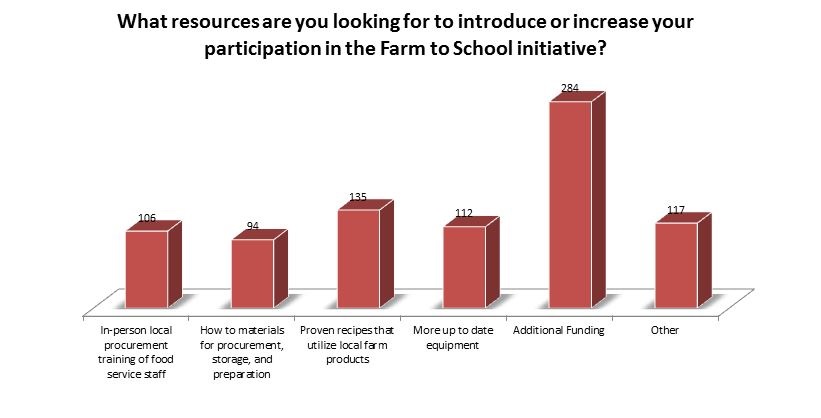2016-2017 New York State Farm to School Survey Results
During the 2016-2017 school year the NYSED Office of Child Nutrition and The Department of Agriculture and Markets came together to collaborate on a Farm to School survey. The survey intended to collect information about what schools were buying from New York State farms and how they were integrating those foods into school meals. See original survey.
Question 1 - Part 1
Do you use ingredients from New York State farms in your school meals?
87%
of schools surveyed say they use ingredients from NYS farms.
That's429Districts |
With1,968Schools |
And1,131,734Students |
(Note: Of the 726 public school districts, charter schools, and BOCES in New York State, 74% completed the survey.)
Question 1 - Part 2
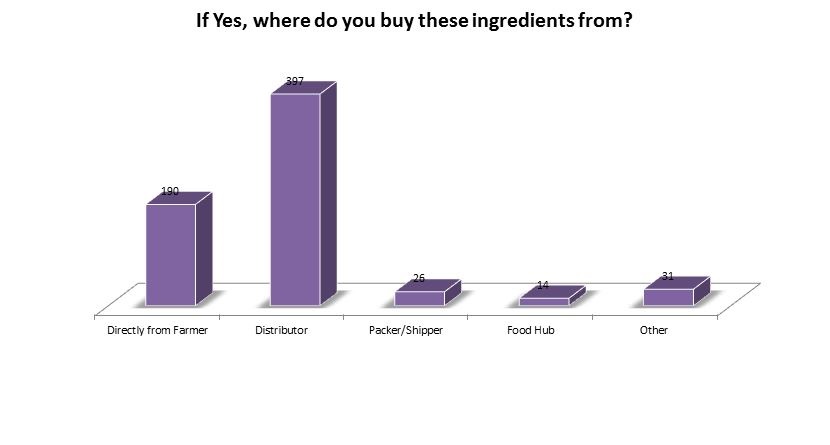
*See Other results for this question
Question 1 - Part 3
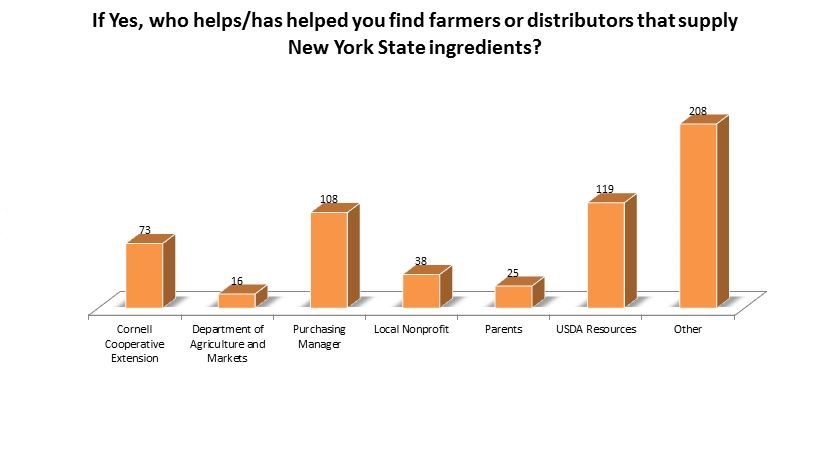
*See Other results for this question
Question 1 - Part 4
If No, why are you not using ingredients from New York State?
- Limited Growers - Limited availability of products in the area
- Cost
- Unable to get products delivered
- Purchase from a FSMC or Meal Vendor
- Procurement is too complicated
- Current distributors sell little or no NYS products
- Limited prep time for working with fresh products
- Growing season does not coincide with school year
- School is too small to have buying power
- Do not have time or resources to focus on Farm to School
Question 2
What ingredients from New York State growers would you like to purchase more of?
| Fruits & Vegetables - 114 | Squash - 27 | Peppers - 9 | Oranges - 3 |
| Leafy Greens - 65 | Broccoli - 26 | Herbs - 8 | Strawberries - 3 |
| Apples - 59 | Milk/Dairy Products - 22 | Beans - 7 | Asparagus - 2 |
| Carrots - 57 | Corn - 17 | Cabbage - 6 | Breads - 2 |
| Tomatoes - 51 | Celery - 14 | Peaches - 6 | Grains - 2 |
| Everything* - 36 | Cucumbers - 12 | Melons - 6 | Spinach - 2 |
| Pears - 32 | Garlic - 11 | Berries - 5 | Beets - 1 |
| Protein (Beef, Chicken, etc.) - 31 | Maple Syrup - 11 | Grapes - 4 | Brussel Sprouts - 1 |
| Onion - 30 | Honey - 10 | Oranges - 3 | Plums - 1 |
| Potatoes - 28 | Cauliflower - 9 | Peas - 3 | Rhubarb - 1 |
*Would like to purchase everything if they could get it at a competitive price.
Question 3
If you are not currently purchasing local ingredients, what would you like to purchase from New York State growers?
| Fruits & Vegetables - 15 | Carrots - 5 | Cauliflower - 2 | Grapes - 1 |
| Apples - 12 | Potatoes - 5 | Milk/Dairy Products - 2 | Herbs - 1 |
| Tomatoes - 11 | Corn - 3 | Oranges - 2 | Mushrooms - 1 |
| Leafy Greens - 9 | Everything* - 3 | Pears - 2 | Pineapple - 1 |
| Cucumbers - 7 | Onions - 3 | Bananas - 1 | Protein (Beef, Chicken, etc.) - 1 |
| Squash - 6 | Peaches - 3 | Cabbage - 1 | Strawberries - 1 |
| Broccoli - 5 | Peppers - 3 | Garlic - 1 | Watermelon - 1 |
*Would like to purchase everything if they could get it at a competitive price.
Question 4
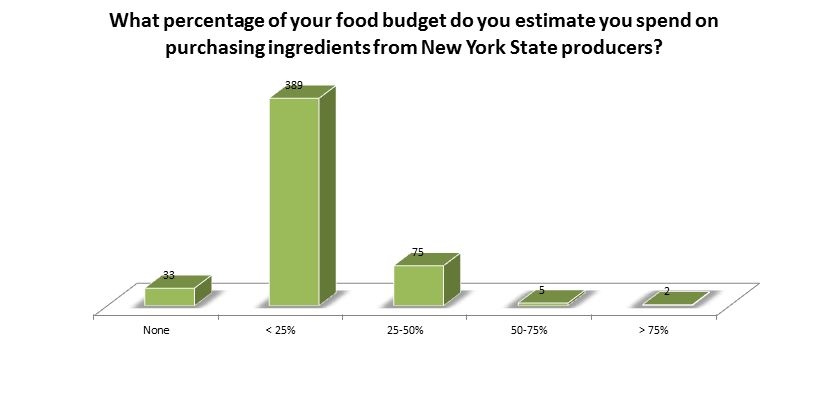
Question 5
What are the three most common ingredients served in your meal programs that are produced at New York State farms?
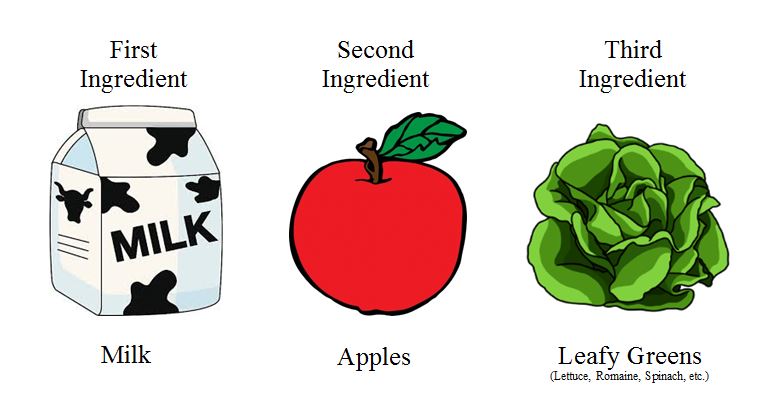
Question 6
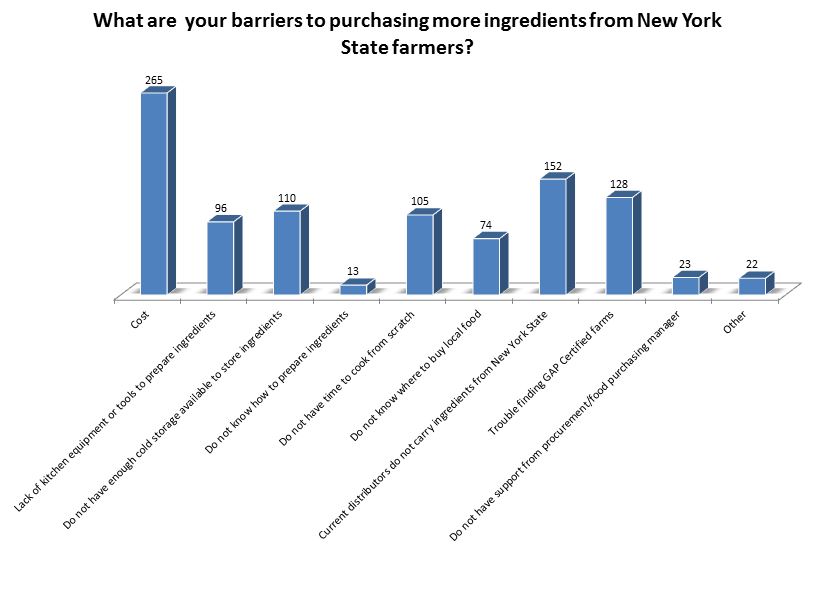
*See Other results for this question
Question 7
